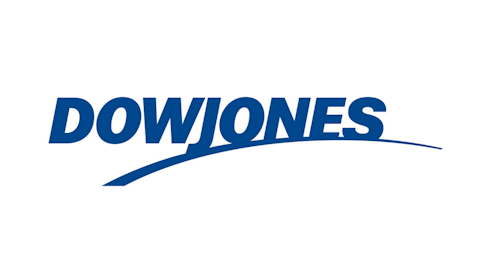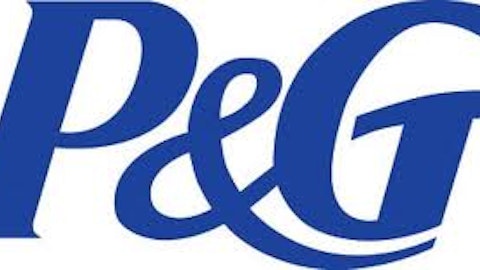

Market Share in Beauty:
P&G’s market share of the global beauty market (2008: 15.4%, currently: 13.2%); any gain in market share could fuel growth and sales
.

- Market Share in Baby Care:
The Procter & Gamble Company (NYSE:PG)’s market share of the global baby diapers market (2008: 46.9%, currently: 43.5%) market share in the global tissue production market (2008: 16.8%, currently: 19.7%); any gain in market share could fuel growth and sales
.


- Market Share in Health Care:
P&G’s market share of the global health care product market (2008: 10.1%, currently: 10.0%); any gain in market share could fuel growth and sales.

Market Share in Grooming:
P&G’s market share of the global grooming market (2008: 46.2%, currently: 46.6%); any gain in market share could fuel growth and sales
.

- Growth in Fabric Care, Beauty, Baby Care, Health Care, and Grooming Markets:
All of these essential markets have grown considerably since 2008, fueled primarily by increasing prosperity in emerging markets such as Latin America and Asia, and with acceleration in all of these industries anticipated P&G is presented the opportunity to meet growing demand and fuel growth
.
Acquisitions:
The company possesses a long history of acquiring quality brand names from other companies and utilizing their established distribution network to increase sales of the product and fuel growth; further acquisitions could add to the company’s large portfolio of brands and increase revenue.- Brazil, Russia, India, and China:
Since 2002, Brazil has grown with a compound annual growth rate of 23%, Russia with a rate of 25%, India with a rate of 27%, and China with a rate of 17%; and with further growth in these core markets anticipated the company is presented the opportunity to fuel overall growth.

Threats:
Rising Material Prices:
Any rise in the price of the materials the company utilizes to manufacture its products could squeeze margins and threaten business.
Competitors:
Major publicly traded competitors of P&G include Church & Dwight Co., Inc. (NYSE:CHD), Colgate-Palmolive Company (NYSE:CL), The Clorox Company (NYSE:CLX), and Avon Products, Inc. (NYSE:AVP). All of these companies operate in the consumer staples industry and compete directly with Procter & Gamble.
Church & Dwight is valued at $8.33 billion, pays out a dividend yielding 1.86%, and carries a price to earnings ratio of 23.63. Church & Dwight offers a broad range of household, personal, and specialty products, with its most prominent brand being Arm & Hammer. Since 2006, the company’s TTM profit margin has been expanding, from the 6% level in 2006 to the current 12.01% mark.
Colgate is valued at $54.91 billion, pays out a dividend yielding 2.31%, and carries a price to earnings ratio of 24.04. Colgate operates in two major segments: oral, personal, & home care and pet nutrition. In April, the company completed a 17:25 stock split. The company’s business model is fundamentally strong, with a TTM profit margin of 13.60%.
Clorox is valued at $11.09 billion, pays out a dividend yielding 3.04%, and carries a price to earnings ratio of 19.73. Clorox’s core business operates in the it’s cleaning, household, lifestyle, and international segments. Fundamentally, the company’s business model is tested and stable, with a TTM profit margin of 10.02%.
Avon is valued at $10.05 billion, pays out a dividend yielding 1.03%, and carries a negative price to earnings ratio. Avon’s business is concentrated in the beauty products industry, with the company’s operations stretching through 64 countries. Fundamentally, Avon’s business model is flawed, with a TTM profit margin of -0.78%.
The Foolish Bottom Line
Financially, The Procter & Gamble Company (NYSE:PG) is extremely solid. The company possesses stable revenue growth, one of the strongest product portfolios in the world, and a growing dividend. Looking forward, the company is likely to derive fast-paced growth from emerging markets and innovative product offerings . All in all, Procter & Gamble is one of the strongest businesses in the world, however presently is vastly overvalued relative to the caliber of growth expected from the company in the upcoming set of years. Thus, investors should wait for a substantial pullback in the stock before adding this safe and stable company to their long-term portfolio.
Ryan Guenette has no position in any stocks mentioned. The Motley Fool recommends Procter & Gamble.
The article The World’s Largest Consumer Products Company originally appeared on Fool.com.
Copyright © 1995 – 2013 The Motley Fool, LLC. All rights reserved. The Motley Fool has a disclosure policy.



